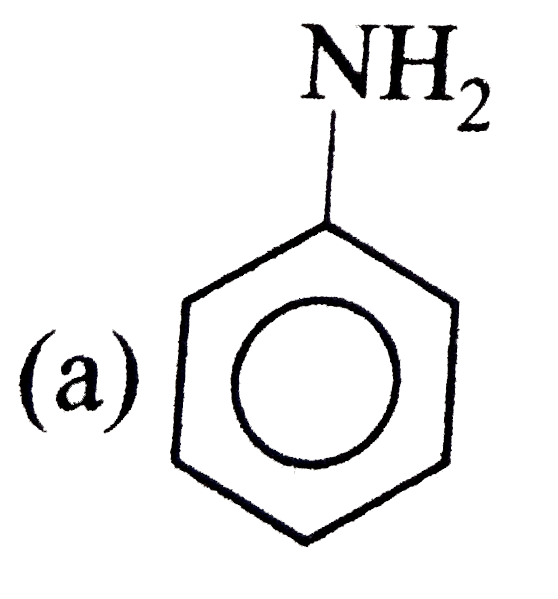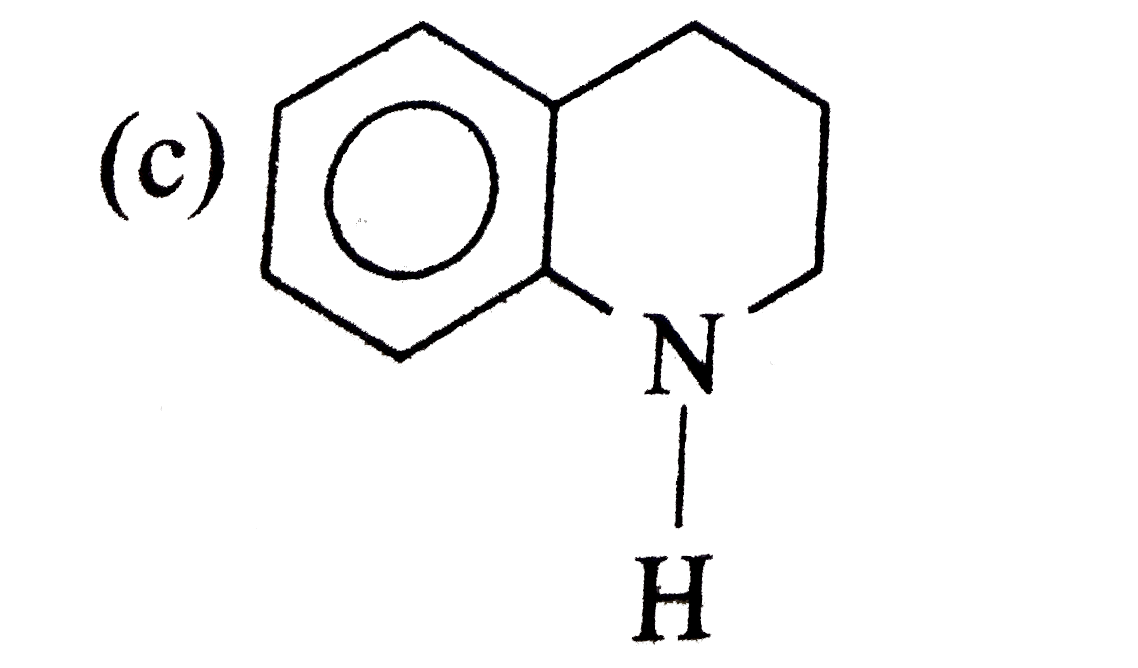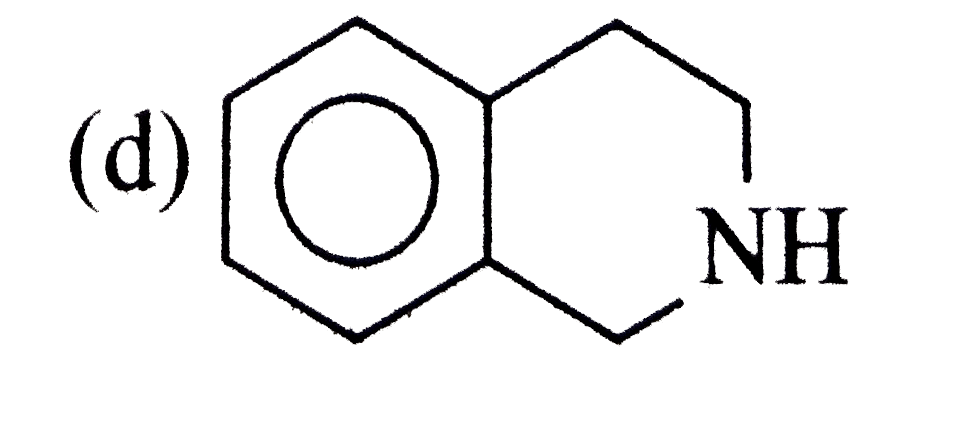Choose the strongest base among the following:




The correct Answer is:D
To determine the strongest base among the given options, we need to analyze the availability of the lone pairs of electrons on the nitrogen atoms in each structure. The more available the lone pair, the stronger the base.
1. Identify the Structures:
- Let's denote the compounds as A, B, C, and D. Each compound has a nitrogen atom with a lone pair.
2. Analyze Resonance Effects:
- Compound A: The nitrogen's lone pair can participate in resonance with the aromatic ring, making it less available for protonation.
- Compound B: Similar to A, the lone pair on nitrogen can also participate in resonance with the ring, reducing its basicity.
- Compound C: The lone pair on nitrogen can participate in resonance, but it is slightly more available than in A and B due to the structure.
- Compound D: The lone pair on nitrogen is not involved in resonance with any ring or double bond, making it fully available for donation.
3. Compare Basicity:
- Since the lone pairs in compounds A, B, and C are involved in resonance, they are less available for bonding with protons (H⁺).
- In contrast, the lone pair in compound D is not involved in resonance, making it the most available for protonation.
4. Conclusion:
- Based on the analysis, compound D has the most available lone pair and is therefore the strongest base among the options provided.
Final Answer:
The strongest base among the given options is D.
- Let's denote the compounds as A, B, C, and D. Each compound has a nitrogen atom with a lone pair.
- Compound A: The nitrogen's lone pair can participate in resonance with the aromatic ring, making it less available for protonation.
- Compound B: Similar to A, the lone pair on nitrogen can also participate in resonance with the ring, reducing its basicity.
- Compound C: The lone pair on nitrogen can participate in resonance, but it is slightly more available than in A and B due to the structure.
- Compound D: The lone pair on nitrogen is not involved in resonance with any ring or double bond, making it fully available for donation.
- Since the lone pairs in compounds A, B, and C are involved in resonance, they are less available for bonding with protons (H⁺).
- In contrast, the lone pair in compound D is not involved in resonance, making it the most available for protonation.
- Based on the analysis, compound D has the most available lone pair and is therefore the strongest base among the options provided.
The strongest base among the given options is D.
Topper's Solved these Questions
- BOOK - A2ZCHAPTER - SOME BASIC PRINCIPALS OF ORGANIC CHEMISTRYEXERCISE - Bond Fission, Reagents, Reactive Intermediates And Their Stability31videos
SOME BASIC PRINCIPALS OF ORGANIC CHEMISTRY
- BOOK - A2ZCHAPTER - SOME BASIC PRINCIPALS OF ORGANIC CHEMISTRYEXERCISE - Structure Isomerism28videos
SOME BASIC PRINCIPALS OF ORGANIC CHEMISTRY
- BOOK - A2ZCHAPTER - SOME BASIC PRINCIPALS OF ORGANIC CHEMISTRYEXERCISE - Section D - Chapter End Test60videos
SOME BASIC PRINCIPALS OF ORGANIC CHEMISTRY
- BOOK - A2ZCHAPTER - SOME BASIC CONCEPTS OF CHEMISTRYEXERCISE - Section D - Chapter End Test30videos
SOME BASIC CONCEPTS OF CHEMISTRY
- BOOK - A2ZCHAPTER - STATES OF MATTEREXERCISE - Section D - Chapter End Test30videos
STATES OF MATTER
Similar Questions
Knowledge Check
- Question 1 - Select One
The strongest base among the following is
A B
B C
C D
D
- Question 2 - Select One
The strongest base among the following is
AC6H5NH2B(C6H5)2NHCC2H5NH2D(C2H5)2NH - Question 3 - Select One
The strongest base among the following is
ANaOHBKOHCLiOHDCsOH

